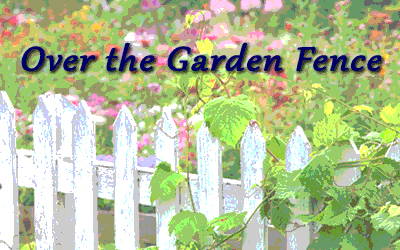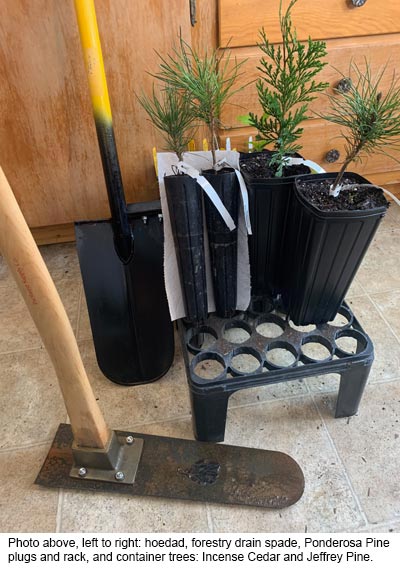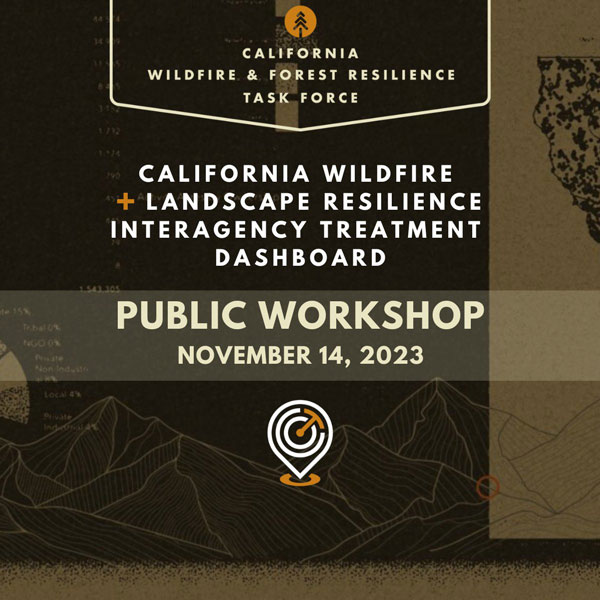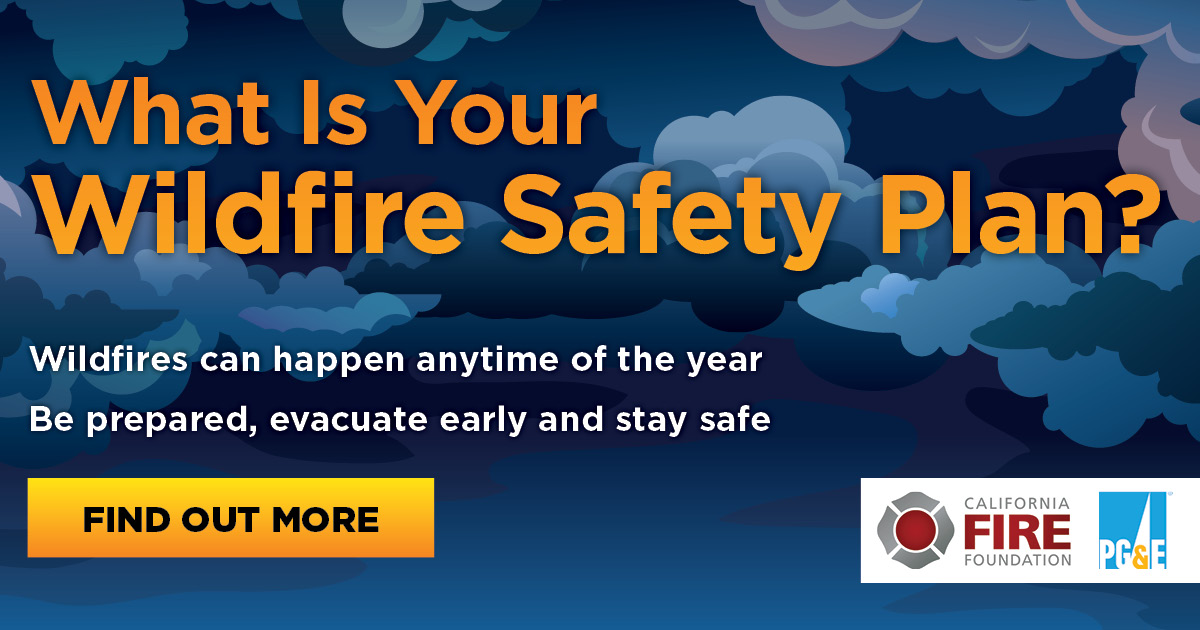Planting Conifers for Post-Fire Forest Restoration
March 14, 2023 – Ron Allen, UC Master Gardener, Mariposa County – The Oak Fire (July 2022) devastated large parts of the ponderosa pine forest in the mountains east of Mariposa. Wooded  landscapes on private properties and substantial areas of the adjoining Sierra National Forest were affected. This article explains how to plant conifer seedlings for post-fire forest restoration.
landscapes on private properties and substantial areas of the adjoining Sierra National Forest were affected. This article explains how to plant conifer seedlings for post-fire forest restoration.
The conifer plant materials for reforestation are not large potted or crated trees, but rather seedlings in smaller tree pots or plugs. Potted seedlings—about one- to two-feet high—still come in standard, cylindrical one-gallon nursery containers, but are nowadays more commonly grown in tapered, ribbed plastic containers which are square in cross-section. These small trees are typically two to three years old. The plugs are smaller, cylindrical tubes, about two inches in diameter. Plug trees are cheaper, less hardy, and generally only a year old post-germination.
When purchasing pot or plug seedlings, it is tempting to select plants that are taller, anticipating that they will grow sooner to a desired height. But, instead, one should favor plants that are thicker at their base; they have a higher success rate for survival, owing to the likelihood of their having better root structures. Seedling survival is the key.
 Planting a potted seedling is straightforward. Clear the spot of any slash to expose the underlying soil. A site on the shady side of a stump or log is perfect. With a post-hole shovel (a drain spade), dig a hole about twice the volume of the tree pot and deep enough so that the pot soil matches the surrounding ground level. Tip the potted plant over, letting it slide out, and settle it into the hole. Refill the hole with native soil.
Planting a potted seedling is straightforward. Clear the spot of any slash to expose the underlying soil. A site on the shady side of a stump or log is perfect. With a post-hole shovel (a drain spade), dig a hole about twice the volume of the tree pot and deep enough so that the pot soil matches the surrounding ground level. Tip the potted plant over, letting it slide out, and settle it into the hole. Refill the hole with native soil.
In the case of a very hot local fire—indicated by the presence of white ash in the immediate area—add some mycorrhizal fungi soil amendments. Otherwise, native soil is best for refill. Level off the spot around the plant.
Planting a plug seedling is similar, but the hole is much smaller. It is important to ensure that the lower portion of the plug is firmly surrounded by soil when the hole is closed. Professional foresters—with many plugs to put down–use a special tool, called a hoedad, for this purpose. The hoedad is a short-handled hoe with an elongated blade. The planter strikes the blade into the ground and wiggles the handle to and fro so as to create a v-shaped indentation. The seedling plug is dropped into the depression. Then the hoedad is struck again into the ground adjacent to the plug and the handle pressed down, so that the deep blade closes the lower soil around the plug’s lower roots. With a stomp of the boot from above, the forester closes the planting hole. An accomplished forester does this in 30 seconds.
Pot or plug seedlings should be separated by ten to twelve feet for reforestation projects. If the target landscape is well-watered, the survival rate is approximately 75 percent. When the landscape water is less reliable, the survival rate falls to about 30 percent.
Appropriate conifers for reforestation after the Oak Fire are Ponderosa Pine, Sugar Pine, Knobcone Pine, Incense Cedar, and Douglas Fir. Future reforestation articles will cover broadleaf tree reforestation, post-fire planting of shrubs, and meadow restoration.
Related: Over the Garden Fence – The Partnership Between Humans and Nature During Fire Recovery: Part 5
Over the Garden Fence – The Partnership Between Humans and Nature During Fire Recovery: Part 4
Over the Garden Fence – The Partnership Between Humans and Nature During Fire Recovery: Part 3
Over the Garden Fence – The Partnership Between Humans and Nature During Fire Recovery: Part 2
Over the Garden Fence – The Partnership Between Humans and Nature During Fire Recovery





 landscapes on private properties and substantial areas of the adjoining Sierra National Forest were affected. This article explains how to plant conifer seedlings for post-fire forest restoration.
landscapes on private properties and substantial areas of the adjoining Sierra National Forest were affected. This article explains how to plant conifer seedlings for post-fire forest restoration. Planting a potted seedling is straightforward. Clear the spot of any slash to expose the underlying soil. A site on the shady side of a stump or log is perfect. With a post-hole shovel (a drain spade), dig a hole about twice the volume of the tree pot and deep enough so that the pot soil matches the surrounding ground level. Tip the potted plant over, letting it slide out, and settle it into the hole. Refill the hole with native soil.
Planting a potted seedling is straightforward. Clear the spot of any slash to expose the underlying soil. A site on the shady side of a stump or log is perfect. With a post-hole shovel (a drain spade), dig a hole about twice the volume of the tree pot and deep enough so that the pot soil matches the surrounding ground level. Tip the potted plant over, letting it slide out, and settle it into the hole. Refill the hole with native soil.